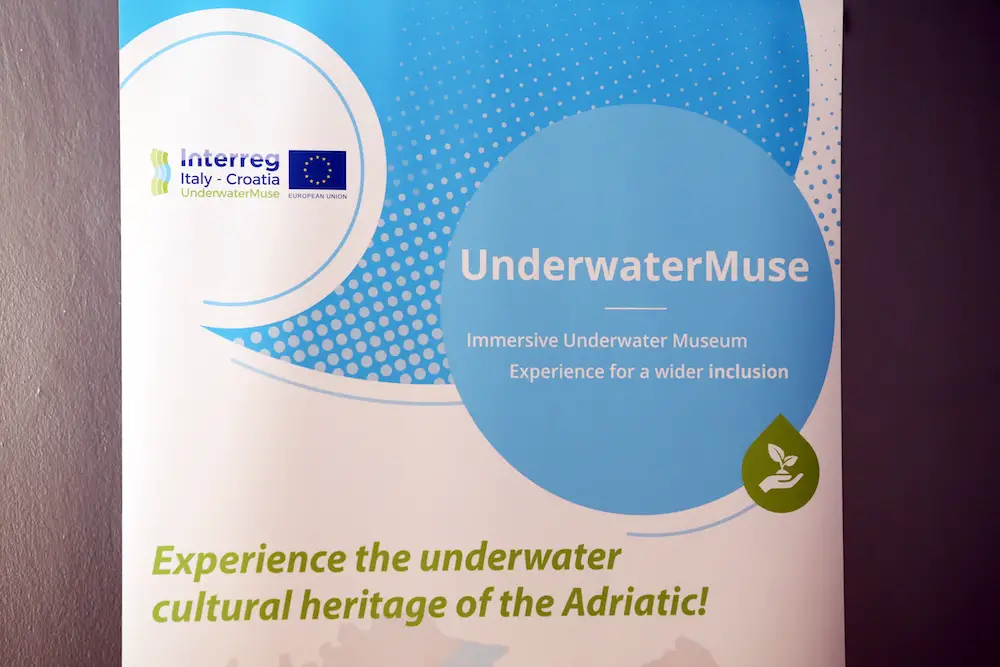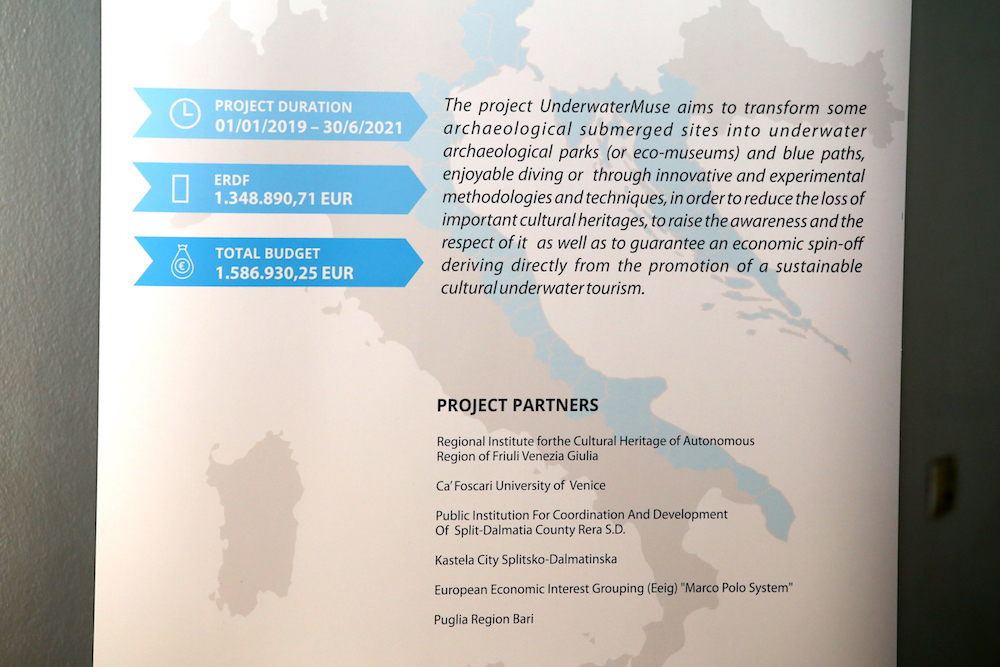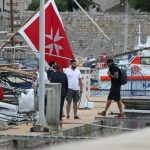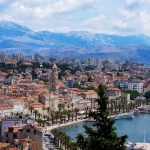
October 22, 2020 – ‘Underwater Muse,’ the underwater archeological project of the Resnik Split Airport area, known as ‘Siculi,’ was presented in the 15th-century Vitturi castle in Kaštel Lukšić.
Dalmatinski Portal reports that the project, which is financed from EU funds and cross-border cooperation with Italy, was presented by the city administration, the Public Institution RERA, and the Museum of the City of Kaštela, who explained what has been done and how soon visitors to the Vitturi castle will be able to enjoy a virtual walk through the sites.
Mayor Denis Ivanović stated that Kaštela has a rich cultural heritage and history that is quite unexplored, and EU funds are an opportunity to explore and get to know the entire history.
“The ultimate goal is to bring everything we have hidden to light,” he concluded pictorially.

Veljko Martinović
Project manager Marjan Dumanić, on behalf of RERA, added that the Resnik submarine site would be explored. An attempt will be made to protect and transform it into use in an economically acceptable way.
“In addition to presenting the findings of archaeological research, we will use all our knowledge to form a 3D model that we will soon be able to see in the Kaštela City Museum,” announced Dumanić.
The director of the Kaštela City Museum, Ivan Šuta, revealed what they found through archeological research.
“We have found remains that date back to 6000 BC, i.e., older than the Neolithic period. With this research, we have contributed to the knowledge of the older Neolithic period when they first had permanent settlements; they began to engage in agriculture at a depth of three meters. We were also looking for the remains of a Roman port, or rather of late antiquity,” he said.

Veljko Martinović
He claimed that they had been given enough data to make a virtual reconstruction so that visitors to Vitturi Castle could walk through the three permanent sites.
Mate Parica from the Department of Archeology, University of Zadar concretized part of the findings.
“We discovered an ancient port, on the one hand, ceramics, processed stone and the like from archeological materials, and on the other hand, we worked on a prehistoric site, which contained floor plans of older buildings. There we found several flint artifacts, knives, scrapers, and the like,” Parica described.
To read more about lifestyle in Croatia, follow TCN’s dedicated page.










